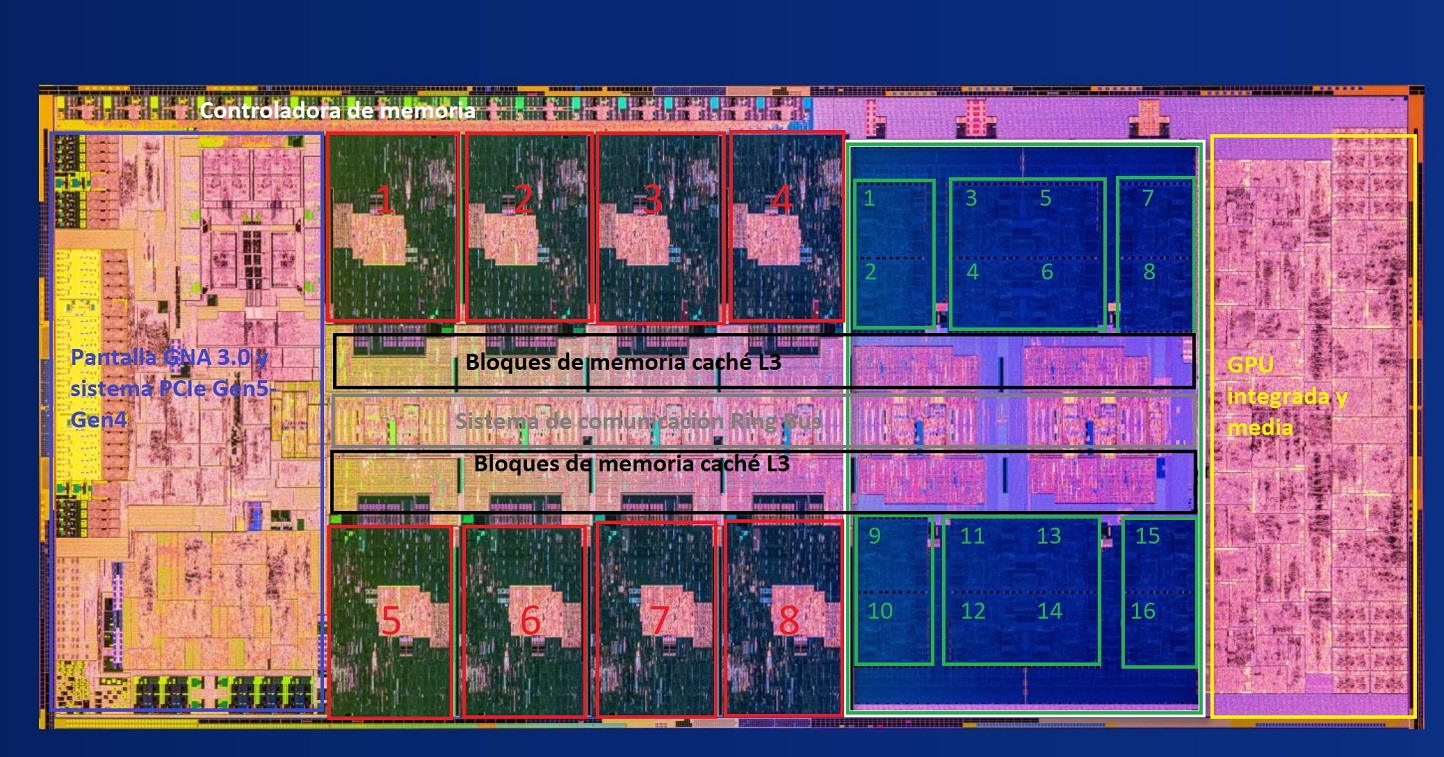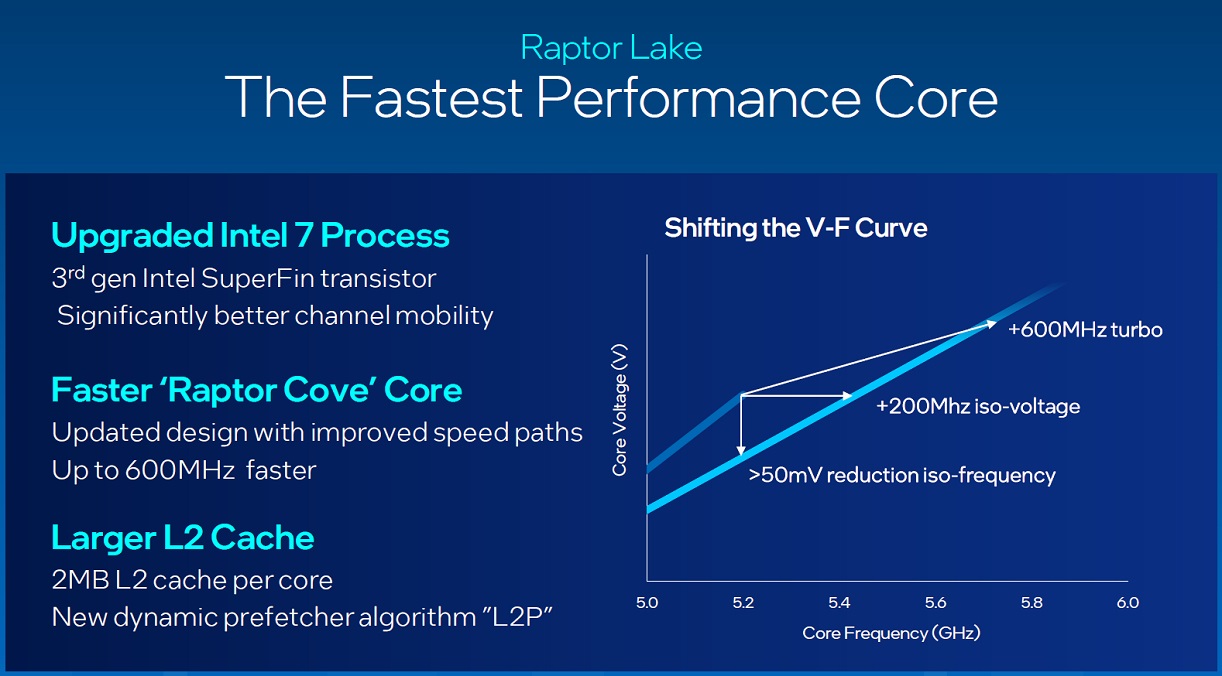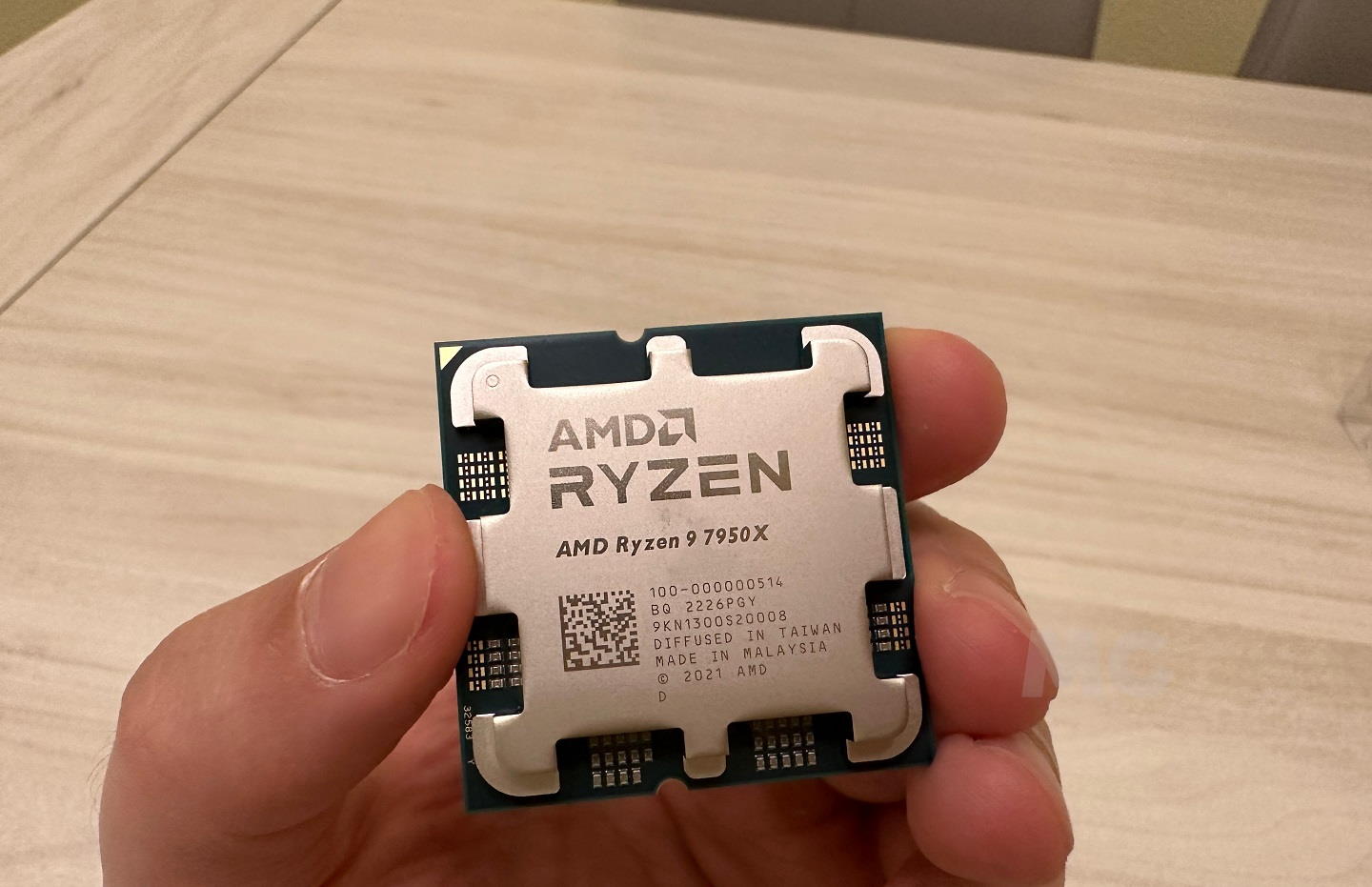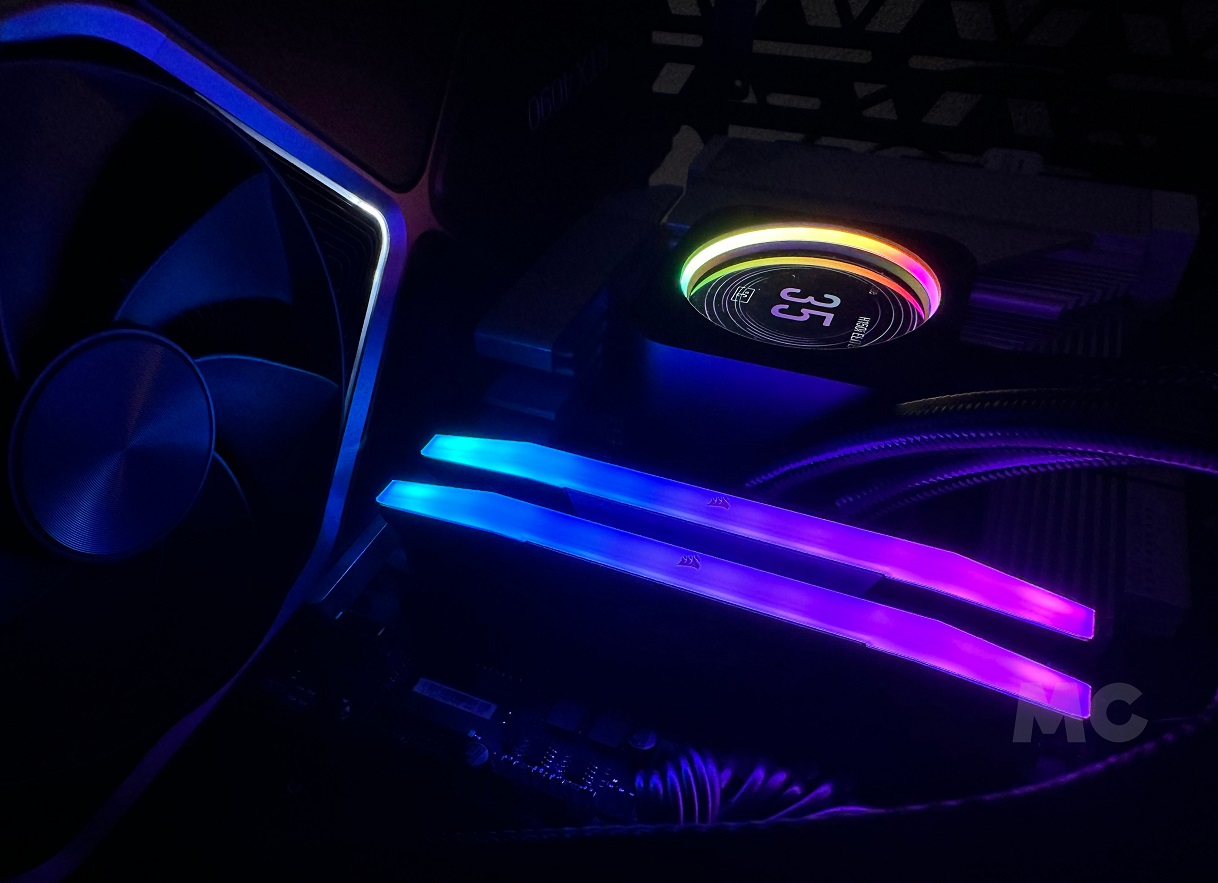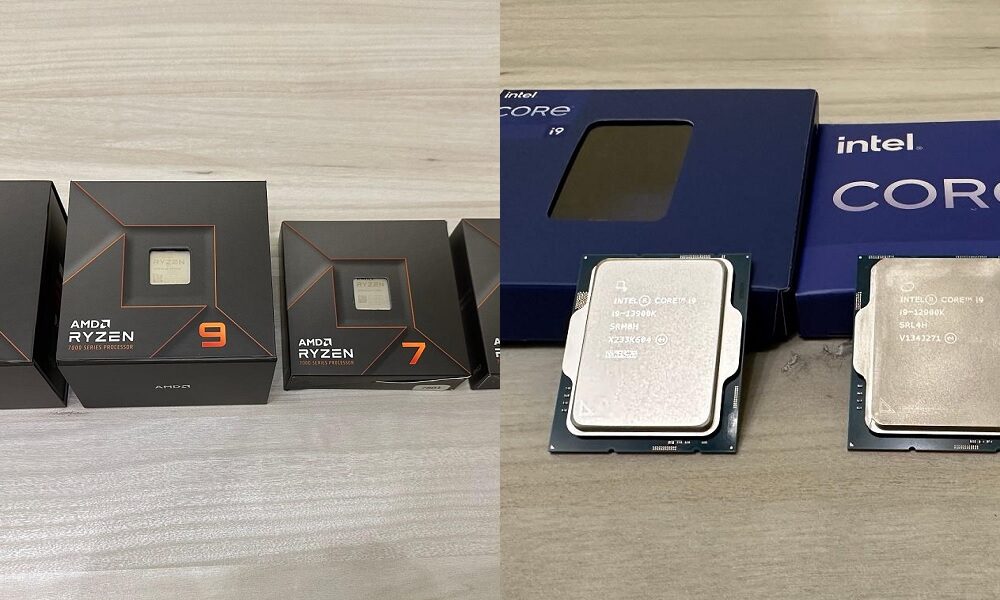
The processor is the brain of any PC, and it is undoubtedly one of its most important components, since it deals with perform all general tasks starting from a multi-purpose approachwhich means that without it none of the other components that make up a computer could function.
When you open a folder, the processor is the one that takes care of perform the necessary math operations to complete that commandand sends the result that the graphics card needs to reflect the change on the monitor.
If you run a game, the processor takes care of all basic tasks necessary for it to load all the logic, instructions and other elements of this, and transmits to the graphics card the information it needs to develop its work, establishing a dependency relationship that explains why the performance of a graphics card can be seriously affected , for better or worse, by the power of the processor.
With the passage of time, processors have maintained their basic function, although there has been an important evolution that It has allowed us to achieve very important advances which, in the end, have not only translated into higher performance, but have also vastly improved the versatility and efficiency of these chips when dealing with different workloads.
We can say that, in essence, a current processor works in the same way as one from the eighties, but it is also correct to say that it copes with the workloads in a very different way. It is a very interesting topic that still raises some doubts today, and that is why we have decided to give shape to this guide, in which we are going to tell you three things that you should know about how a current processor works.
1.-Favorite processor and cores
One of the biggest leaps that occurred in the processor industry was the development of multicore chips. This marked the end of the GHz race, and ushered in the era of multi-threaded processing.although in this sense it should be noted that Intel was ahead of processors with more than one core with its HyperThreading technology, which allowed a core to work with one process and one thread.
The AMD Athlon X2 and Pentium D processors were the first to implement dual-core configurations, and today we can find processors configured with up to 24 cores and 32 threads in the general consumer market. When we talk about nuclei we mean physical units that can handle a processwhile threads refer to the combined total of processes and threads that a processor can handle.
A multicore processor has a certain number of cores, but not all of its cores are the same. This reality gives rise to what we know as favorite kernels, which are those that are slightly better than the others, and that they can offer superior performance. These cores are normally the ones that reach a higher working speed without stability problems, and their correct use is key for a processor to develop its full potential.
For all of the above, it is necessary for the operating system to be capable of identify those favorite nuclei, and that they prioritize the distribution of the different workloads, since if they do not do so, they will be wasting the most important resource that the CPU has. Proper use of favorite cores can make a significant performance difference especially in tasks that are executed in two or four threads.
2.-Dynamic adaptation to the workload
Another very interesting evolution that has taken place in the world of processors has been the dynamic adaptation of these to each workload, and in the broadest sense of the word. Let’s take the Intel Core i9-13900K as an example, which is a processor that has two different core blocks, one with high performance and the other with high efficiency.
High-efficiency cores are designed to offer good performance with low power consumption, while high-performance cores offer maximum power but higher power consumption. Well, the first they are used in specific workloads that do not require as much powerand also in those that have remained in the backgroundwhile high-performance cores are used for demanding tasks that do require a high level of performance, and which are running in the foreground.
It is also important to note that not all workloads need the same number of cores and threads, and that they are not distributed in the same way either. So, for example, a basic task that could be assigned to only two cores, while when running a game the most normal thing is that it parallelizes all the processor cores, but if we have a processor with eight cores or more it will only really saturate. two or four cores, and leave the rest with a charge level below 30%.
What I have explained to you before leads us to the concept of active cores, which ultimately determine the actual load on the processor. A processor can work at 10% of its capacity, at 50% or at 100% depending on the use we are making of the equipment because, in the end, It is designed to adapt to each task that we are carrying out.
The same happens with the work frequencies, which will be higher or lower depending on the demands of each task, and will also depend on the workload, processor temperature and consumption. Most current processors have a base working speed and a maximum working speedwhich is the one they can reach when turbo mode is triggered.
However, the maximum frequencies they depend on the number of active cores and threads. When we only have one or two active cores, it is when the maximum speed peak is recorded, as long as the working temperatures and the power supply allow it, and this maximum peak is reduced as the cores and threads of the processor are saturated, that is to say , as its use increases, until stabilizing at a specific level. Therefore, when you see that a processor can work at a maximum of 5.7 GHz, for example, be clear that this speed is only possible with one active core, or in certain cases with two active cores.
3.-Consumption and working temperatures
We have already seen that a processor has a series of favorite cores, which are the ones that offer the best performance, and also that is able to adapt to each specific task depending on the number of cores you need, and to fine-tune the working speed to maximize performance whenever possible.
All this has a significant impact on two major keys of any processor, consumption and working temperatures. It is very easy to understand, a processor that only works at 10% or 15% load will have much lower energy consumption and working temperatures than one that works at 80% or 100% load.
For this reason, you should not trust the base consumptions that Intel and AMD list in their processors, since in the end the real values will be much higher, and the cooling solutions that we are going to need will also have to be more powerful. Let’s go with a specific example, and we return to the Core i9-13900K, a processor that, according to Intel, has a TDP of 125 watts, but in its PL2 mode, that is, under a more realistic use and with the turbo mode activated, it shoots out at 251 watts.
As we can see, the difference is enormous, and this implies that the working temperatures and the refrigeration needs will also be much higher. In my tests, said processor reached a 98 degree peak with a workload of 100%, while in games, with a workload that usually did not exceed 30%, it registered averages 73 degrees. If we talk about consumption we have a similar story, since the Intel Core i9-13900K consumes 165 watts in games, 52 watts in Cinebench R23 working in single thread and reaches 309 watts in the multithread test.
These enormous variations are a consequence of what I have told you, of how the processor adapts in real time to each workload to offer the maximum possible performance. I’ve given Intel as an example, but the same is true of AMD. The Ryzen 9 7950X has an average consumption on the Windows 11 desktop of 34 watts, figure that goes up to one 122 watt average gamingand which is fired at 225 watts in the Cinebench R23 multithread test. The temperatures also oscillate as consumption increases, going from the 68 degrees that it registers in games to the 95 degrees that it reaches at full load.
You must make it clear from everything we have told you at this point that the consumption value that matters in a processor is not the PL1, and neither is the base TDP, but the maximum value when turbo mode comes into play, which is typically identified as PL2 in the case of Intel or PPT in the case of AMD. The difference between one and the other can be double, or perhaps even more, and this can play a trick on you if you have a very limited power supply or a cooling system that is too tight in performance.
If you have doubts about the maximum consumption of a processor ask before buying and find out well, because if you don’t you could end up getting a nasty surprise. I speak with knowledge of the facts, since I have come across more than one case in which they have asked me for help with a new PC that was giving stability problems, and in the end it turned out that the power supply was not sufficient for that configuration because they did not take into account the high consumption of the processor.
As a reference, and so that you have an approximate idea that will serve as a starting point, as a general rule, if we are going to assemble a high-end processor, it is advisable to accompany it with a power supply. 100 watts more than the recommended minimum value for your graphics card.
For example, if we plan to buy a GeForce RTX 4080 and accompany it with a Core i9-13900K, the ideal would not be a 750 watt source, but an 800 watt onebecause the actual consumption of the equipment will be around 710 watts under load, but it will register higher peaks and could increase if we have connected peripherals, network cards or RGB LED lighting systems.
Continuing with the previous example, if we change the Intel Core i9-13900K for a Ryzen 5 7600X consumption would be reduced to about 610 watts, and in this case we would have plenty with the 750-watt source, in fact we could mount a 700-watt source without any problem. The difference in consumption that we have achieved only with the change of processor is very large, as we can see.
